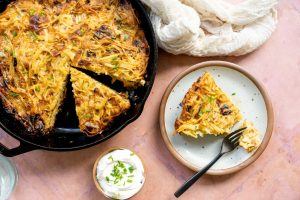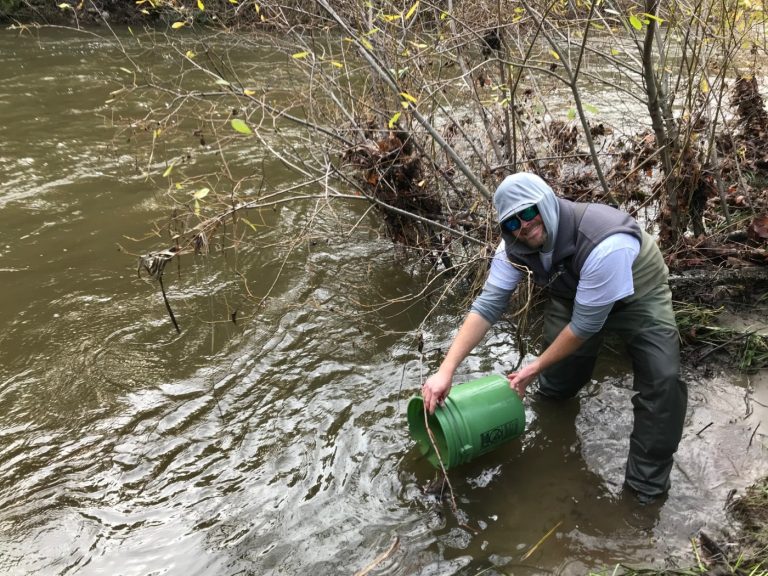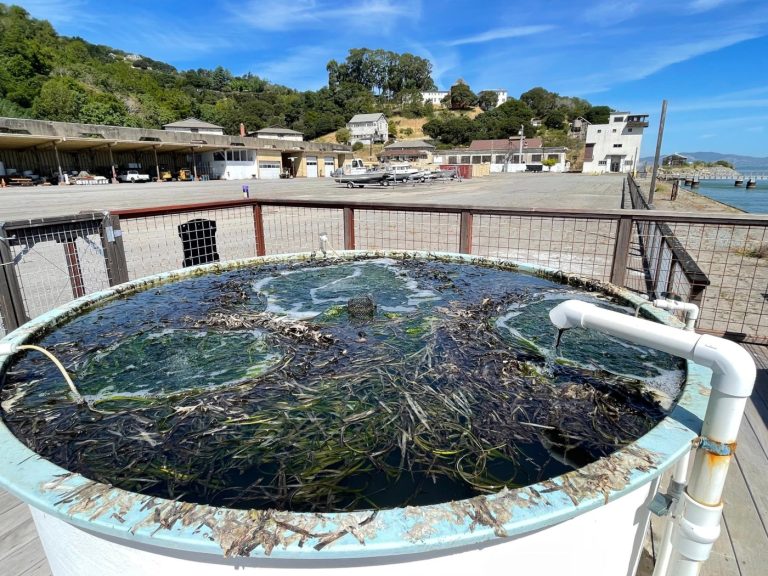It’s spring, and Passover begins at sundown on April 22. So it’s just in time that a new cookbook has landed from Micah Siva, the San Francisco-based Jewish chef behind the Nosh With Micah blog. Filled with recipes for the holiday and the rest of the year, too, “Nosh: Plant Forward Recipes Celebrating Modern Jewish Cuisine” (The Collective Book Studio, $35) offers an array of vegetarian and vegan-friendly dishes sure to satisfy both traditional and non-omnivorous palates.
This holiday is a special one for Siva on many levels. It was during Passover a year ago that she learned she was pregnant with her first child. Now with a four-month-old baby and a one-month-old book, Siva is sharing how becoming a vegetarian as a Jewish kid in Canada and marrying into the Sephardic Jewish tradition have influenced her cooking, and why Passover is not only a religious holiday but a great chance to exercise creativity in the kitchen, too.
Q. Can you tell me more about your backstory?
A. I moved to San Francisco three years ago. I’m originally Canadian — we moved to the states after living in the U.K. I went to a culinary school in New York called Natural Gourmet Institute of Health and Culinary Arts and then went to college and became a dietitian in Canada. I was working as a dietitian in Toronto for a few years in a community setting, doing cooking classes, teaching people how to read nutrition fact tables and showing children vegetables, essentially. I was feeling disconnected from my love of food, so I started a small food blog in 2017 to get more excited about eating dinner every night.
When my husband and I moved to the U.K. in 2018, I started to work in food media doing what I do now: recipes, writing and photography for brands, newspapers, magazines and my own food blog, Nosh with Micah, where I share vegetarian Jewish-inspired dishes. Often, it’s inspired by ingredients that might be found in the diaspora, so there’s a lot of tahini, a lot of dates and date syrup, but also everything bagel spice.
Q. What inspired this book?
A. When I was 12, I told my mom I wanted to go vegetarian. She freaked out a little — it was a different time to be vegetarian in in the ’90s than it is now — so she hired a dietician to teach us. The main thing was that she didn’t want to make two dinners every night, so if I wanted vegetarian food, I had to make it.
I always noticed that when I went to Jewish holidays, sitting around the table as a family, there wasn’t a lot for me to eat. Nobody really knew what to do with me. I’d always have to bring my own food or eat mashed potatoes and a sad salad. (This) book shows that Jewish food can evolve with the times, as people are eating less meat now, and there are more vegetarians at our holiday tables. Just because you don’t eat meat doesn’t mean that you shouldn’t be able to connect with the food of your heritage. Jewish food can be modern, exciting and different and deserves a place on any diverse cookbook shelf.
Q. Passover is coming up! Tell me more about what Passover means to you.
A. I grew up Ashkenazi. My family’s from Eastern Europe, and my husband’s family is Turkish. Depending on where your family comes from, that dictates what you can and can’t eat during Passover. During Passover as a kid, there were many more restrictions than I have now, where I can eat something like corn, beans or rice because I’ve married a Sephardic Jew. It’s a whole new world for me.
Growing up, (Passover) was always my favorite holiday, because I thought it was so fun that we had to get creative (with) food. My mom had this cookbook called “Matza 101,” and it told you 101 ways to use matzo, so we had matzo baklava, matzo tiramisu and taco shells made out of matzo. It was a time of experimentation and getting out of our dinnertime rut. I still feel that way. It’s so exciting to eat during Passover because it makes me rethink what we’re having, shop a little differently and be more mindful around my cooking routine.
There’s a part in the Haggadah, the Passover book, where it says “Let all who are hungry come and eat.” Since we don’t live close to family, we’ve always seen that line as a way to connect with people in the community. I always have a table full of people.
Q. Which recipes from the book do you recommend for Passover?
A. Some of the recipes are inspired by foods I grew up eating on Passover, like my cast-iron caramelized onion and potato kugel. It’s essentially a giant latke. I have two recipes for matzo balls. The vegan one contains kitniyot (foods like corn, beans or rice that are not permitted during Passover in some groups), but the non-vegan one, which contains egg, does not. I make a turmeric vegetable soup that has a golden color. My favorite recipe is my Black and White Cookies. It’s a vegan, gluten-free, grain-free and everything-free-except-for-sugar cookie with an almond flour base, arrowroot starch, maple syrup and coconut oil.
Micah Siva’s new “Nosh” offers plant-forward celebrations of modern Jewish fare. (The Collective Book Studio, 2025)
Q. What inspires you about the recipe development process?
A. So much of Jewish food is based around memories, family and tradition. Everyone’s bubbe says that theirs is the best chicken soup or theirs is better than their sister’s or sister-in-law’s. When you’re making recipes for a Jewish cookbook, the first thing I think about is: Where is the memory coming from?
I went through my grandmother’s tattered favorite cookbook and looked at the marinades for things like the brisket, the dough for the kreplach and the spices that were in some of these dishes and tried to be as true to to those as I could. With the brisket recipe, I adapted it slightly but largely used that as the base for the mushroom tofu brisket.
Once you get the idea of what the recipe is going to look like, you test it. You fail a bunch of times. You send it out to testers. They test it, they provide feedback, you test it again, and you send it out again for testers. You get really sick of making it. You make a really big mess in the kitchen. And then finally everyone’s happy with it — and then you send it to your editor and they red-line a bunch of the language, and then it makes its way into the book.
Q. You’re talking about a global Jewish diaspora, where people may connect with different flavors. What characterizes a specifically Jewish recipe?
A. A lot of it was looking at dishes that are common for Shabbat or holiday meals across the diaspora, or looking at communities and asking people, “What’s on your holiday table?” and “Is this a common thing or a family thing?” My husband and I have been very fortunate to be able to travel, so I always made a point of doing two things: going to see someone in the Jewish community and always taking a cooking class from someone in the Jewish community. A lot of the dishes — for example, slow cooker dishes — are very common for Shabbat, because you can’t use electricity. I also researched Jewish archives and resources and spent a lot of time reading about food traditions in different parts of the world.
Related Articles
Q&A: Ina Garten protégé Lidey Heuck debuts her first cookbook
Spring feast recipe: Lemon, Rosemary & Olive Oil Cake
Spring feast recipe: Arugula and Romaine Salad
St. Patrick’s Day recipe: Corned beef sandwiches + secret sauce
Calling all ‘Top Chef’ nerds: Here are 6 more ways to feed your inner foodie
Q. Did living in the Bay Area influence the cookbook?
A. Especially as a transplant, I understand how fortunate we are to live in the Bay Area and have the ability to get fresh produce year round from farmers. It’s such a special place to live, when it comes to food. I’ve been working with Oaktown Spice Shop for a number of years and they were able to supply all the spices for my recipe testing. I was also able to connect with Sylvie Charles of Just Date. We’re so spoiled, it’s crazy. In Midwestern Canada at the farmers market, if you want anything local, it’s basically beets and potatoes. Here, there are lemons! It’s wild to me.
For more food and drink coverage
follow us on Flipboard.












